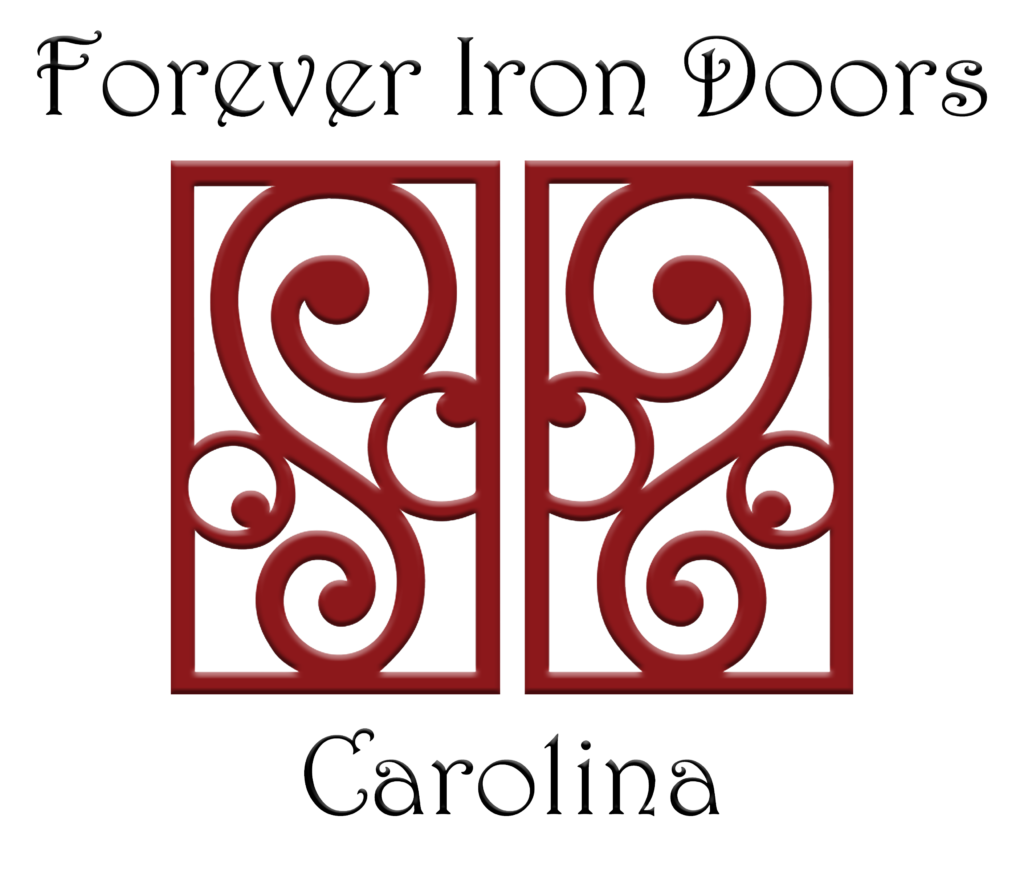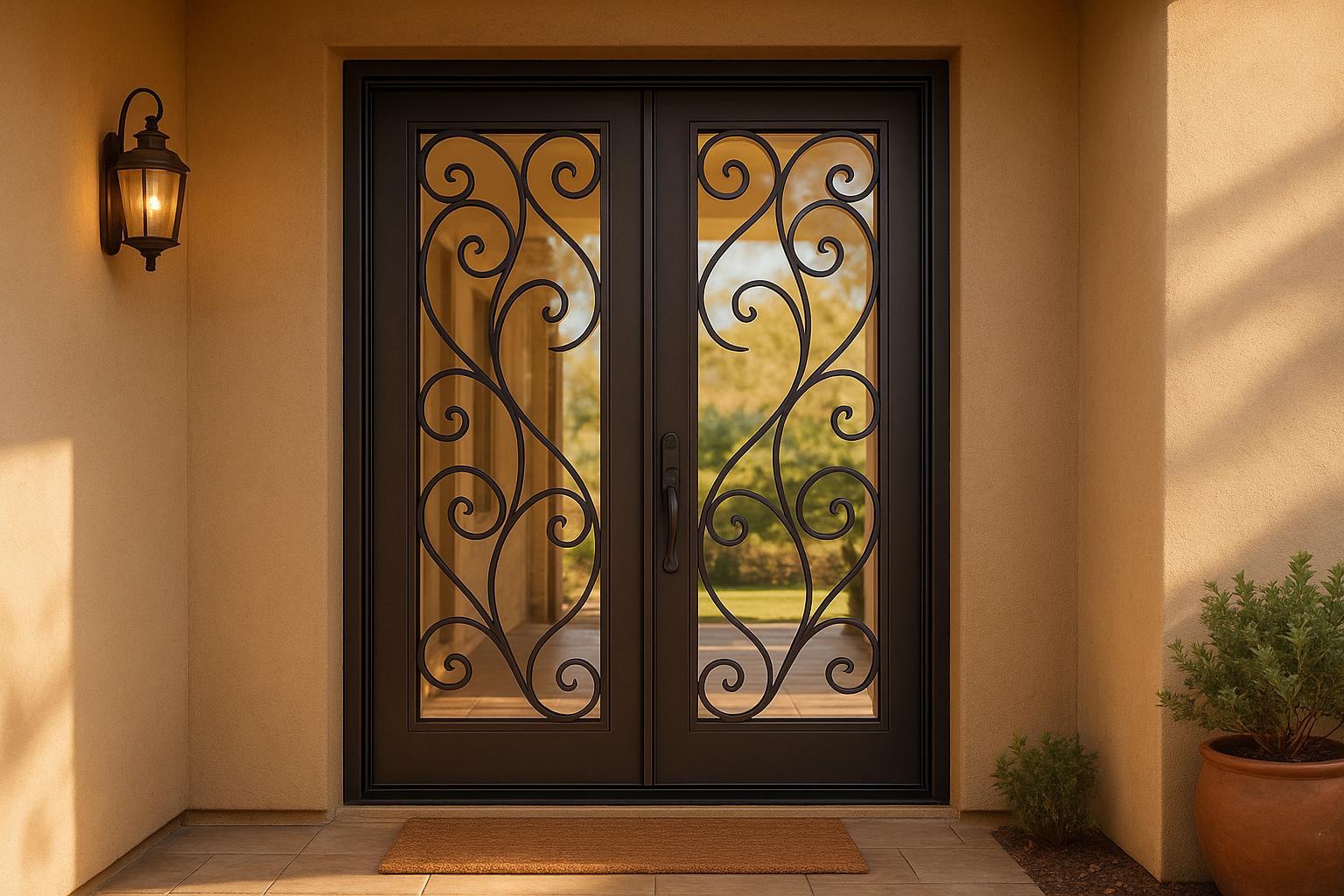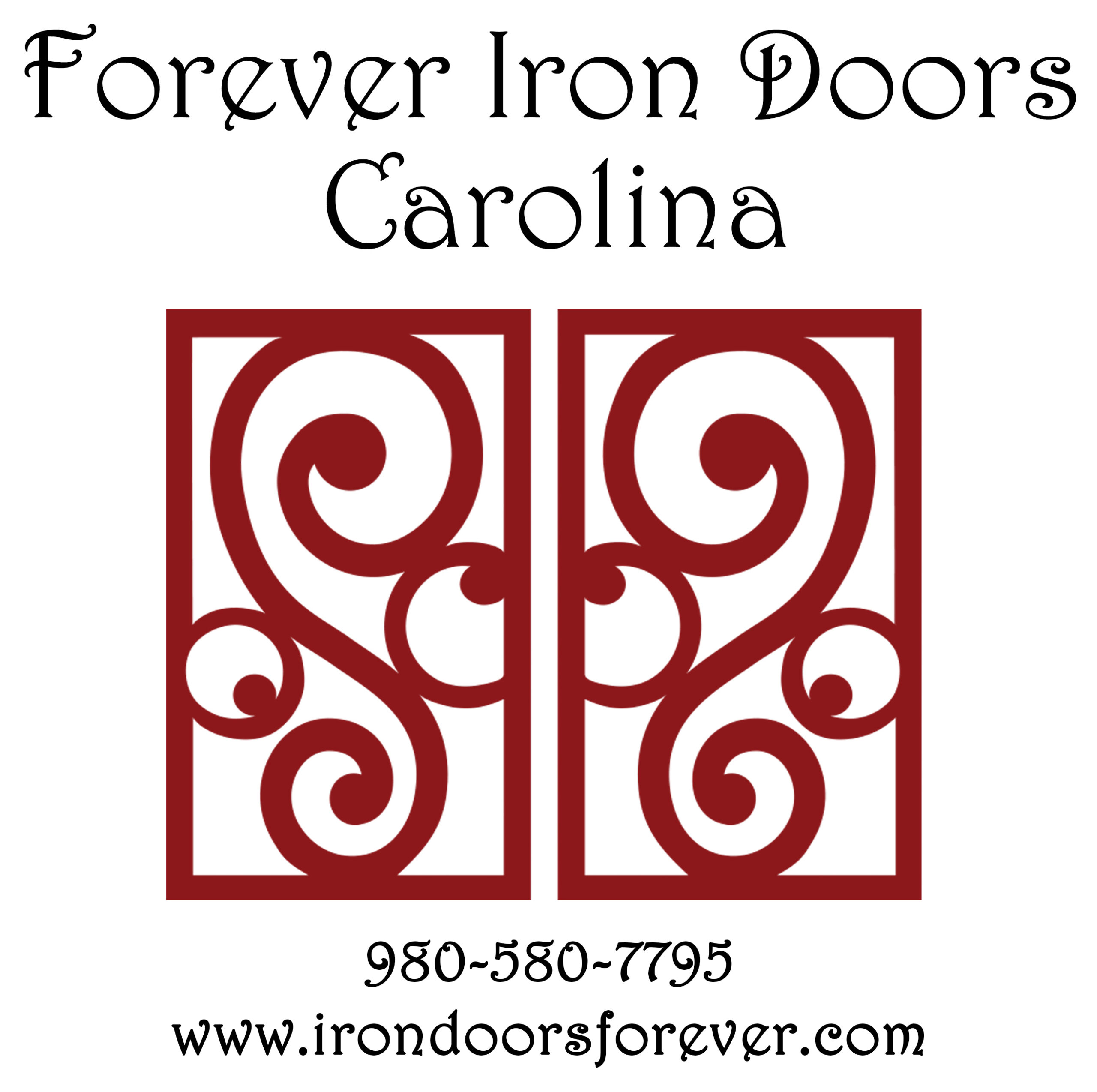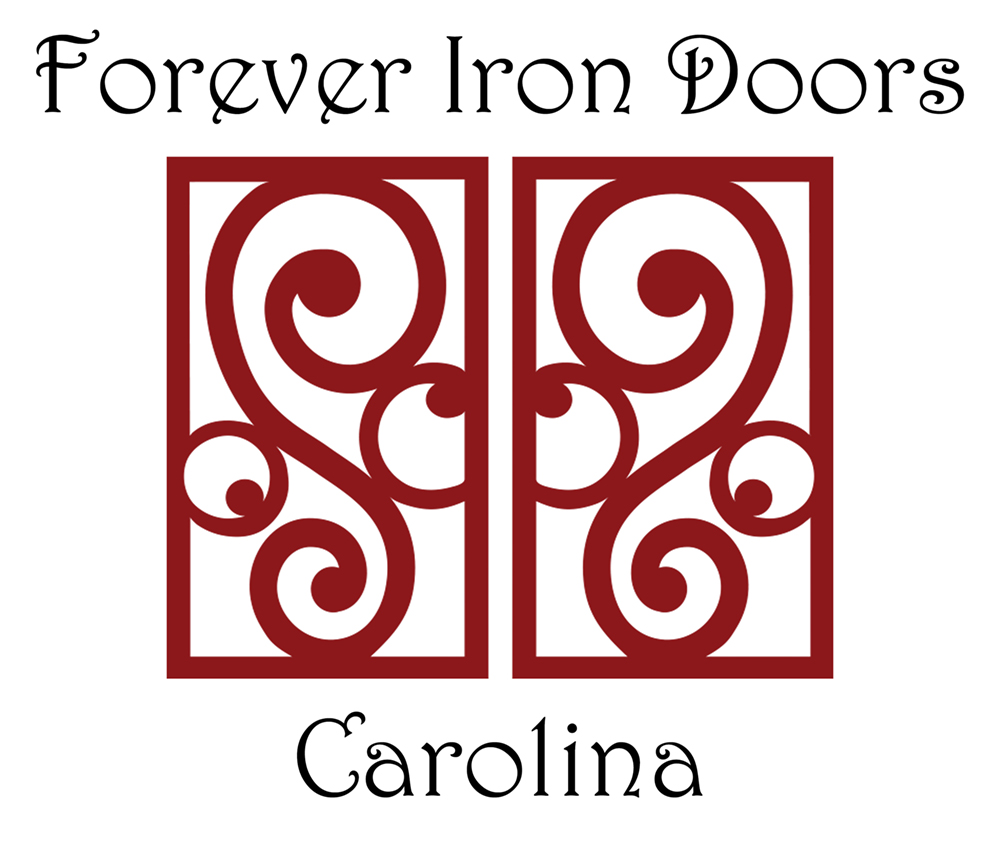Custom iron doors not only look stunning but also help you save on energy bills. Equipped with advanced insulation, thermal breaks, and energy-efficient glass, they keep your home comfortable year-round by reducing heat loss in winter and heat gain in summer. Here’s why they stand out:
- Insulation: Polyurethane foam cores and double-layered designs minimize heat transfer.
- Thermal Breaks: Separate indoor and outdoor temperatures, cutting energy loss further.
- Energy-Saving Glass: Low-E coatings and argon-filled panes block UV rays and improve insulation.
- Durability: Resistant to warping, pests, and weather, they require minimal upkeep.
- Cost Savings: ENERGY STAR-certified models can lower energy bills by 12% and reduce HVAC strain.
Insulation Features in Custom Wrought Iron Doors
Modern custom wrought iron doors are designed with advanced insulation technologies, transforming them into efficient thermal barriers. These features not only help maintain a comfortable indoor environment but also contribute to noticeable savings on energy bills.
Polyurethane Foam Insulation
At the heart of energy-efficient wrought iron doors is polyurethane foam insulation. This dense foam fills the core of the door, creating a barrier that minimizes heat transfer through the metal. Unlike hollow frames, doors with polyurethane-filled cores significantly reduce energy loss.
The foam works by trapping air within its structure, slowing the transfer of heat. This means that whether it’s blazing hot in the summer or freezing in the winter, the insulation helps stabilize indoor temperatures while reducing the strain on HVAC systems.
Double-layered iron doors offer even greater insulation benefits compared to single-layer designs. These doors feature two layers of metal with the foam core sandwiched in between, delivering thermal efficiency that rivals – and often surpasses – traditional materials.
Additional advancements, such as thermal breaks, further improve insulation performance.
Thermal Breaks for Improved Energy Efficiency
Thermal breaks are a game-changer when it comes to enhancing the energy efficiency of wrought iron doors. By inserting a material with low thermal conductivity between the interior and exterior sections of the door frame, thermal breaks help isolate indoor and outdoor temperatures. This non-conductive barrier minimizes heat transfer and keeps indoor climates stable.
"A Thermal Break is accomplished when a material of low thermal conductivity is placed between the two halves of the metal frame to stop energy transfer. This reduces heat conduction through the door’s metal framing and achieves energy efficiency." – ironwroughtdoors.com
This technology makes homes cooler during the summer and warmer during the winter while also reducing surface condensation. Most wrought iron and steel glass doors can be equipped with thermal breaks, making this upgrade a practical option for many custom door installations. While standard iron doors rely on dense foam for insulation, those with thermal breaks deliver even better performance.
Weather-Stripping and Air Sealing
No matter how well-insulated a door is, it won’t perform effectively without proper air sealing. Air leaks can account for 30% to 40% of a home’s heating and cooling losses, which highlights the importance of weather-stripping and sealing.
High-quality weatherstripping materials – such as rubber seals, foam strips, and magnetic strips – help block drafts and seal gaps. Regular maintenance, like inspecting and replacing worn weatherstripping quarterly, ensures these seals remain effective. Additionally, using bristle sweeps at the base of the door and ensuring thresholds are properly aligned can further prevent air infiltration.
Taking proactive steps, such as replacing weatherproofing materials before they fail, can save homeowners 25% to 30% on energy costs. Caulking around the door frame and ensuring proper door alignment are also simple yet effective ways to reduce gaps.
Powder-coated finishes, often applied to custom wrought iron doors, provide an extra layer of protection against temperature changes. Together, these insulation and sealing measures allow wrought iron doors to meet or even exceed the thermal efficiency of other materials.
Energy-Efficient Glass Options for Custom Iron Doors
When it comes to custom wrought iron doors, the type of glass used significantly impacts energy efficiency. Modern glass technologies not only enhance insulation but also maintain the natural light and design appeal that make these doors so popular. This means homeowners can enjoy both energy savings and stunning aesthetics.
Insulated Glass Units (IGUs)
Insulated Glass Units, or IGUs, have transformed the energy efficiency of doors and windows. These units consist of two or three glass panes sealed together with a space filled with air or gas, creating a thermal barrier that reduces heat transfer. By incorporating desiccant-filled spaces, IGUs can achieve U-Values as low as 1 W/m²K, with triple-pane units offering even better performance. On top of that, modern double-pane windows can cut noise levels by about 25 dB while minimizing heat loss, heat gain, and condensation.
To further improve energy performance, IGUs are often paired with Low-E coatings.
Low-Emissivity (Low-E) Coatings
Low-E coatings are a game-changer for managing heat and light. These coatings reduce ultraviolet (UV) and infrared light transmission while keeping the glass clear. They help lower heating losses by approximately 30% and reduce cooling loads by reflecting excess solar heat. Since about 30% of a home’s heating energy escapes through windows, Low-E coatings offer significant energy savings. They also block around 76% of sunlight that would otherwise turn into unwanted heat during the summer.
"Low-E coating is a high-quality type of insulation for windows that helps keep the outside temperature outside, and the inside temperature inside. Low-E coating cuts down the UV rays and infrared light that come through the glass itself." – Cheyenne Janke, Sales and Product Specialist, Neighborhood Windows & Doors
Beyond energy benefits, Low-E coatings protect your interiors by reducing UV-related fading of furniture and carpets. When combined with tinted glass, they provide even better solar control, more design options, and added privacy. During colder months, these coatings reflect heat back into the home, ensuring a comfortable indoor environment.
Adding argon gas to IGUs takes insulation to the next level.
Argon Gas-Filled Glass Panels
Filling the space between glass panes with argon gas instead of air significantly improves insulation. Argon, being denser than air, conducts less heat, making it an effective insulator. This colorless and non-toxic gas reduces heat transfer and minimizes convection currents within the glass unit, helping maintain consistent indoor temperatures.
When a 90% argon gas fill is used in a Low-E IGU, the insulating value can improve by up to 16%. This translates into noticeable energy savings, with some estimates suggesting annual savings of at least $120. Argon also reduces heat transfer by up to 30% and prevents frost buildup, further enhancing energy performance. For the best results, argon gas works most effectively in 1/2-inch spaces between double panes. While krypton gas offers even better insulation, argon is more cost-effective, making it a popular choice for residential use.
However, it’s worth noting that while argon gas improves thermal insulation, it doesn’t significantly reduce external noise.
Forever Iron Doors Carolina integrates these advanced glass technologies into their custom wrought iron doors. Homeowners get the best of both worlds – exceptional energy efficiency combined with the timeless elegance of wrought iron craftsmanship. These glass solutions, paired with features like thermal breaks and weather-stripping, ensure that custom iron doors are as functional as they are beautiful.
Wrought Iron Doors vs. Other Materials: Energy Efficiency Comparison
Choosing the right door material isn’t just about aesthetics – it’s also about energy efficiency and long-term performance. Comparing wrought iron doors with other materials like wood, steel, and fiberglass sheds light on how they stack up in terms of insulation, durability, and overall energy savings. This section builds on earlier discussions about insulation and glass to highlight why wrought iron doors stand out.
Key Factors for Comparison
When comparing door materials, four key factors come into play: insulation performance, durability, maintenance requirements, and heat transfer pathways.
- Insulation performance: Measured by R-value, this indicates a material’s resistance to heat flow. The higher the R-value, the better the insulation. Since windows and doors account for about 25% of a building’s energy use for heating and cooling, this is a critical consideration.
- Durability: A durable door maintains its performance over time, requiring fewer repairs that could compromise energy efficiency.
- Maintenance requirements: Materials that need frequent upkeep may develop gaps or wear over time, reducing their efficiency.
- Heat transfer pathways: Conductive materials can create heat transfer points, bypassing insulation and affecting indoor temperature regulation.
Material Comparisons
Wood Doors
Wooden doors provide moderate insulation, with R-values ranging between 3 and 4. However, they are prone to issues like termites, rotting, and moisture damage, which can weaken their efficiency over time. For example, a 1¾-inch wooden door typically has an R-value of about 3.03, while a 2¼-inch solid-core wooden door can reach 3.70.
Steel Doors
Steel doors, when insulated, generally achieve R-values between 5 and 6. They are sturdy and weather-resistant but can dent and may rust without proper care. Steel, like wrought iron, is naturally conductive and requires insulation to minimize thermal bridging.
Fiberglass Doors
Fiberglass doors are known for their energy efficiency, often reaching an R-value of 6 when filled with insulating foam. They resist weather damage and require minimal maintenance, making them a reliable choice over time.
"Every year we see fiberglass doors taking over more of the market share." – Denise Quinnette, executive vice president of engineering and product management at ODL Doors
Wrought Iron Doors
Modern wrought iron doors, when equipped with polyurethane foam insulation and thermal breaks, achieve R-values exceeding 6.5 and U-factors as low as 0.24. These advancements significantly reduce heat transfer through the metal frame, making them highly efficient.
Energy Efficiency Comparison Table
Here’s a quick breakdown of how these materials compare:
| Material | Insulation Performance (R-Value) | Durability | Maintenance Needs | Thermal Bridging Potential |
|---|---|---|---|---|
| Wrought Iron | 6.5+ | High (secure) | Low | Low (with thermal breaks) |
| Wood | 3-4 | Moderate | High (needs upkeep) | Moderate |
| Steel | 5-6 | High (can dent) | Low to Moderate | High (without breaks) |
| Fiberglass | 6 | High (weatherproof) | Low | Low |
Why Wrought Iron Excels
Wrought iron doors lead the pack in thermal performance, with their R-values surpassing 6.5. Beyond insulation, they offer exceptional durability, minimal maintenance, and a timeless aesthetic. Companies like Forever Iron Doors Carolina ensure their designs include proper insulation and thermal breaks, enhancing both efficiency and longevity.
ENERGY STAR certified doors can reduce energy bills by around 12%, and high-performance wrought iron doors easily meet these standards. When paired with advanced glass technologies, custom wrought iron doors deliver outstanding energy performance without sacrificing style.
Unlike mass-produced options, wrought iron doors can be tailored for specific climate zones. Customization allows for the perfect combination of insulation, glass, and sealing features to maximize energy efficiency. This flexibility ensures that wrought iron doors not only look great but also perform exceptionally well in maintaining indoor comfort and reducing energy costs.
sbb-itb-cd90297
Long-Term Benefits of Energy-Efficient Custom Iron Doors
Energy-efficient custom iron doors go beyond just looking great – they deliver lasting advantages like boosting property value, lowering energy bills, and standing the test of time with exceptional durability.
Increasing Home Value
Adding energy-efficient iron doors to your home isn’t just about style; it’s a smart investment. Studies show that the right door can recoup over 90% of its cost when you sell your home.
"In today’s market, homeowners and potential buyers are looking for features that combine aesthetic appeal with functionality and durability. Wrought iron doors deliver on all these aspects, making them a wise investment for anyone looking to enhance their property’s value." – irondoorsforever.com
These doors also boost curb appeal, especially since they can be customized to match your home’s architecture. This combination of beauty and practicality makes them a strong selling point. On top of that, they help you save on energy costs, making them a win-win.
Lower Utility Bills
Switching to energy-efficient iron doors can significantly cut down your energy expenses. Older doors can waste nearly a third of your home’s energy. Modern custom iron doors, equipped with insulated cores, help maintain a stable indoor temperature – keeping your home cozy in winter and cool in summer.
Features like energy-efficient glass panels with low-emissivity coatings block harmful UV rays, reducing the need for constant air conditioning or artificial lighting. For even greater savings, upgrades like double-insulated glass can cut energy costs by up to 30%. All of these benefits ease the strain on your HVAC system and lower your monthly utility bills.
Durability and Lower Replacement Costs
Another major perk of custom iron doors is their incredible durability. Unlike wood or steel doors, wrought iron doors resist warping, rotting, and pest damage, keeping their structure and appearance intact for years. They also require less maintenance, making them a cost-effective choice over time. In fact, they often cost less than mid-range solid hardwood doors while lasting much longer.
Take Forever Iron Doors Carolina as an example – their custom iron doors are built to last for generations, combining durability with energy efficiency and timeless design. With fewer replacements needed and lower upkeep costs, these doors offer both financial and aesthetic benefits for the long haul.
Customization and Professional Installation
To get the most from your energy-efficient iron door, two elements are essential: thoughtful customization and expert installation. Together, they ensure your door not only looks great but also performs at its best, offering lasting value over time.
Maximizing Energy Efficiency with Custom Design
Custom iron doors combine beauty and functionality, tailored to meet your specific needs. Choosing the right features – like thermal-rated glass with double or triple panes, Low-E coatings, and argon gas fills – creates a strong barrier against heat transfer. Adding heavy-duty weather stripping, dual insulation layers, and thermal breaks further boosts energy efficiency, while advanced hardware and precise measurements ensure a snug fit.
For even better results, opt for smaller, strategically placed glass inserts. These reduce heat loss in winter and prevent overheating in summer.
Forever Iron Doors Carolina takes customization to the next level with premium 12-gauge iron construction, advanced thermal insulation, and seamless powder-coated finishes. Their glass options include insulated and Low-E glass for better climate control, while finish colors range from classic matte black to custom hues, applied using a multi-step process for durability and fade resistance.
Custom-fit designs minimize gaps, ensuring superior thermal performance without sacrificing style. These tailored features set the stage for optimal energy efficiency when paired with expert installation.
The Importance of Professional Installation
Even the most advanced door design won’t perform as intended without proper installation. Professional fitting and sealing are critical to preventing drafts and air leaks, which can compromise your door’s energy efficiency. A well-installed door operates smoothly, stays balanced, and helps reduce long-term energy costs.
Expert installers ensure precise alignment and eliminate potential air or water leaks. They also address structural issues, such as weak framing, that could undermine the door’s performance.
"The installation team was efficient and professional, ensuring everything was perfect." – Paul Fennell, Boise Custom Windows Customer
Proper installation is key to maintaining thermal performance. Professionals secure all sealing elements and verify that insulation materials and thermal breaks are correctly positioned. This attention to detail ensures your door provides maximum energy savings.
Forever Iron Doors Carolina offers full-service support, from design to installation. Their skilled team ensures every door is fitted and sealed properly, enhancing both energy efficiency and visual appeal. This comprehensive approach guarantees that your custom iron door delivers on all fronts.
When installed correctly, iron doors with thermal breaks, high-quality insulation, and advanced glazing can rival or even surpass the thermal performance of doors made from other materials. By investing in both quality customization and professional installation, you can significantly cut energy costs while enjoying a door that stands out in both form and function.
FAQs
Are custom iron doors energy efficient compared to wood or fiberglass doors?
Custom iron doors stand out for their impressive energy efficiency, particularly when paired with high-quality insulation and glass options. While fiberglass doors are often considered the top choice for energy efficiency, iron doors hold their own by offering excellent insulation and heat retention. This makes them an appealing option for homeowners looking to save on energy costs without compromising on aesthetics.
On the other hand, wood doors naturally fall behind in energy efficiency. Their material properties can lead to gradual heat loss, making them less ideal for maintaining a consistent indoor temperature. Opting for a custom iron door with insulated glass and weatherproofing features not only boosts your home’s energy performance but also ensures long-lasting durability and a classic, elegant appearance.
What features make custom iron doors more energy efficient?
When looking to make custom wrought iron doors more energy-efficient, focus on features like insulated cores, thermal-rated glass (double or triple-paned), and durable weatherstripping. These components work together to reduce heat transfer, improve insulation, and help maintain a consistent indoor temperature.
You might also want to explore energy-efficient glass options, such as low-E (low-emissivity) coatings. This type of glass reflects heat while still letting in natural light, offering both comfort and energy savings. Together, these upgrades can help lower utility bills and keep your home comfortable throughout the year.
How does professional installation improve the energy efficiency of custom iron doors?
When it comes to custom iron doors, professional installation is key to getting the most out of their energy-saving potential. A proper installation ensures the door fits perfectly and seals tightly, effectively preventing air leaks and reducing heat transfer.
With fewer drafts and steady indoor temperatures, professionally installed iron doors can help lower your energy bills while making your home more comfortable. This level of precision not only boosts efficiency but also ensures your custom door remains in top shape for years to come.



